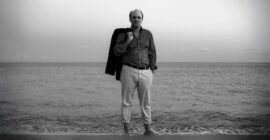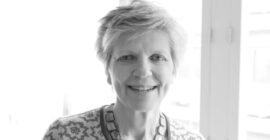Spaceworkers is an architecture and design studio located in Paredes, in northern Portugal, founded by creative directors Henrique Marques and Rui Dinis, and by its financial director Carla Duarte. The studio bases its practice on the exploration and constant research of new paradigms for contemporary architecture, in order to achieve a close relation between form and emotions. The work of the studio reflects the pragmatic vision with which they face challenges, and the critical spirit which evaluates each project’s context, appealing to the sensibility of its clients for a new way to face and perceive space in its sensorial dimension.
S.M: Which examples of contemporary architecture do you consider to be innovative, especially when you are often dealing with historical precedents in your work?
SW: Innovation in architecture, or what an innovative building is, remains a topic of discussion. We believe that true innovation in the field of architecture has to do with the way we make architecture and with its materialization, not with the act of designing: the latter is always an answer to a problem that can arise in the most varied ways. We wouldn’t highlight examples of architecture, but a period in the history of architecture: Modernism. In our opinion, this was crucial in the architectural timeline and in the way architecture is materialized.
S.M: You are both graduates of a private university and chose to stay in Paredes to establish your own practice. Did this framework create any “distance” from established figures in Portuguese architecture during your formative years? How does this reflect upon your work?
SW: We consider that our academic education did not carry the “weight” of those established figures, despite them being present throughout our formative period. They were never imposed as a model to emulate, and we consider this a positive situation at the beginning of our journey as young architects, looking for a path. This allowed us to test different approaches in different contexts and this is still how we do our architecture today. The fact that we are based in our hometown -which we never left, because even during our academic years we continued to live in Paredes- allowed us to gain a critical awareness of this territory. We set out to act with the will to transform it occasionally, by creating in its population an awareness of the importance of architecture in this transformation.
S.M: Why do you have such a preference for bare concrete in your projects? Aren’t you deterred by new regulations which seem to favor more sustainable building materials?
SW: We really like the appearance and plasticity of exposed concrete. However, its use did not appear in our work as a preference, but rather as a consequence. This may seem strange, but the choice of concrete resulted almost exclusively from structural needs and financial constraints, combined with the technical knowhow in our region. Our first projects were developed almost exclusively in Paredes, where the use of advanced construction techniques, outside the traditional building process, were very challenging and very expensive. It was very easy to find a construction team that could build in concrete and given the fact that, structurally, it was the most economically balanced solution, we decided to take advantage of the aesthetics of the material, while saving on coatings and maintenance. Additionally -and this seems to be a contradiction- the use of concrete reduced the ecological footprint, because everything was produced and carried out locally, with local companies, and formwork materials such as local wood.
Even though the production of concrete is not an ecological process in itself, in fact the entire construction, considering it was based on local technology, was as sustainable as possible and stimulating the region’s endogenous resources, while also enhancing a kind of social sustainability. Notably, this happened at a time of deep crisis in the construction sector, which characterized our first projects. After our first works, concrete almost became a kind of identity and those who came to us wanted concrete as the main material, which eventually led to several works in concrete. As far as the sustainability of the material is concerned, our entire process has tried to reduce its ecological footprint to the bare minimum, which we have achieved by producing concrete in-situ, using a local workforce, with local wooden formwork and aggregates. However, this process and concrete still have a lot of room to evolve and become more ecological, from the use of recycled aggregates and additives capable of capturing carbon, with recycled steel, capable of improving the efficiency of the construction system without introducing a high additional cost. Concrete cannot be understood as the “ugly duckling” of sustainability. And there is still a large margin of progress for this material, we just need to study the alternatives. There is still a long way to go.
Read the full interview at the Villas 2022 annual issue.





